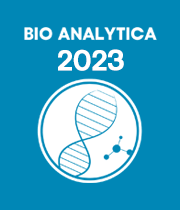Title: Applications of chromatography for analyzing bee products
Abstract:
Bee products has been consumed by humans since ancient times, and its ever-increasing consumption results from its nutritional value and health-promoting effects, like those relating to its antioxidant, anti-inflammatory, anticarcinogenic, antibacterial or anti-fungal properties. The nutritional value/quality and health properties of these products are linked to its constituents, which include proteins, amino acids, lipids, carbohydrates, phenolic compounds vitamins, or minerals, among several other compounds. However, its composition varies greatly according to several factors, like botanical and geographical origins, climatic conditions, the type of soil, or harvesting and processing conditions. This is quite important to prevent one of the main problems currently affecting the commercialization of these products, and consequently the beekeeping industry; this is the fraudulent practice of adulteration. As may be expected, studying the profile of a particular family of compounds (proteins, amino acids, lipids, or phenolic compounds) in bee products has been proposed, to specify/authenticate its origin and to evaluate the corresponding nutritional value or health-promoting effect. It should be also mentioned that food alerts caused by the detection of contaminants, e.g. insecticides such as the family of neonicotinoids or acaricides have recently affected their healthy image, as they could represent a potential risk for consumers.
Therefore, the main goal of this presentation is to show the potential of chromatography for determining bioactive compounds and contaminants in bee products, which are among the most complex matrices that can be found in nature. Different families of bioactive compounds and pesticides, some of them scarcely investigated in this matrices, have been determined by our group in the last years by using different chromatographic techniques (high performance liquid chromatography-HPLC, ultra-high performance liquid chromatography-UHPLC, gas chromatography-GC and supercritical fluid chromatography-SFC) and sample treatments (solvent extraction, solid-phase extraction-SPE, QuEChERS, dispersive liquid-liquid microextraction-DLLME). It should be mentioned that in all cases, new analytical methods were proposed, which fulfilled some of the principles of the green analytical chemistry, and that they were fully validated according with current legislation. Especial attention will be focused on recent results that demonstrated that bee pollen samples can be classified in most cases, by means of a canonical discriminant analysis (CDA) based on the content of the different compounds, according to the corresponding apiary of origin or the harvesting periods.
Audience Take Away:
- Audience will know that there is a growing interest in analyzing bee products. This could be related to the determination of bioactive compounds with the aim of demonstrating the high nutritional value of these products and/or authentication of the origin of bee products. On the other hand, the analysis of contaminants, like pesticides, is the other main group of compounds that are currently being determined in bee products.
- They will be firstly presented some applications of chromatography for determining different families of bioactive compounds in bee products (honey, bee pollen, royal jelly, and beeswax) like glucosinolates and related compounds, betaines, amino acids, and phenolic compounds. After that, some recent chromatographic methods for determining pesticides (neonicotinoids, acaricides, and spinetoram) in bee products will be also summarized. Therefore, it was necessary to propose new analytical methods based on different chromatographic techniques (HPLC, UHPLC, GC and SFC) that were also fully validated.
- It will be also highlighted the potential of chromatographic techniques to determine those compounds, and the need of employing different approaches depending on the physico-chemical properties of the compounds and analyzed matrices.
- The need of using chemometric tools, like CDA, as a complement for the analytical methods to obtain more relevant conclusions.


